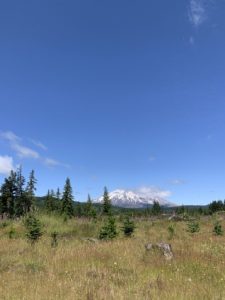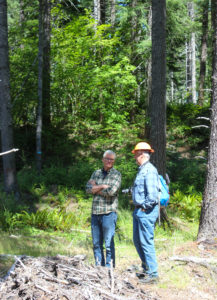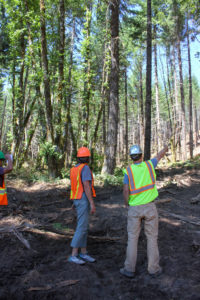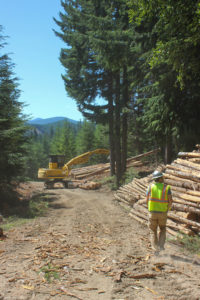Forestry Accelerates Habitat Restoration
Learn about the Land Trust's forest practices near Mount St. Helens
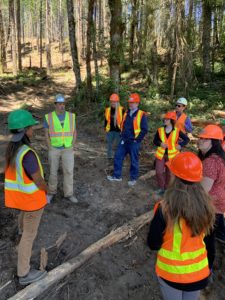 A large swath of forestland on the southeastern edge of the Mount St. Helens National Monument and adjacent to Gifford Pinchot National Forest, is the site of a major conservation success that brought together Columbia Land Trust, Skamania County, and timber company Pope Resources (since acquired by Rayonier) to keep 20,000 acres of working forest intact.
A large swath of forestland on the southeastern edge of the Mount St. Helens National Monument and adjacent to Gifford Pinchot National Forest, is the site of a major conservation success that brought together Columbia Land Trust, Skamania County, and timber company Pope Resources (since acquired by Rayonier) to keep 20,000 acres of working forest intact.
Most of the forest remains in Rayonier’s ownership and continues to be managed as timberland, but is now covered by a conservation easement that prevents it from being subdivided or developed. Columbia Land Trust manages 2,500 acres along Pine Creek.
This summer we visited the Land Trust’s Pine Creek site with Skamania County Commissioners Tom Lannen and Bob Hamlin, staff from the offices of U.S. Senator Maria Cantwell and U.S. Congresswoman Jaime Herrera Beutler, and a team from the Washington Department of Natural Resources. It was a rare opportunity to share, in person, how Columbia Land Trust’s forest practices will expedite the creation of older growth forest conditions that benefit wildlife.
This Central Cascade landscape is home to endangered species including bull trout and northern spotted owl, and shelters the state’s largest elk herd. The area’s connected forestland, cold, clear rivers and streams, and topographic diversity make it desirable habitat for many species, in addition to making the region more resilient to climate change.
As the Pine Creek site was conserved with funding from a combination of state and federal grants dedicated to wildlife that depends on old growth forest habitat, cultivating those conditions is a cornerstone of our stewardship plan.
“Forestry like this can speed up habitat restoration by decades on former industrial timberlands like these,” explained Stewardship Director Ian Sinks. “Selectively cutting trees reduces competition and allows the remaining trees to grow larger, while making room for a younger cohort of minor species that increases structural diversity, which is essential for habitat.”
“We appreciate working closely with the foresters at Integrated Resource Management,” said Natural Area Manager Sanoe Keliinoi. “We created a unique harvest plan that includes a creative mosaic of skips, gaps, and snags to accelerate the development of these (previous) tree plantations towards more natural, forest with old growth characteristics. These features (skips, gaps, and snags) are important wildlife habitat that also add complexity to enhance the overall health of the forest.”
Profits from the timber harvest are re-invested directly back into Land Trust conservation and stewardship efforts.
Read more about Pine Creek and our Mount St. Helens Forest Conservation Plan, which was completed over ten years ago and at the time was the largest conservation project in Washington State.
